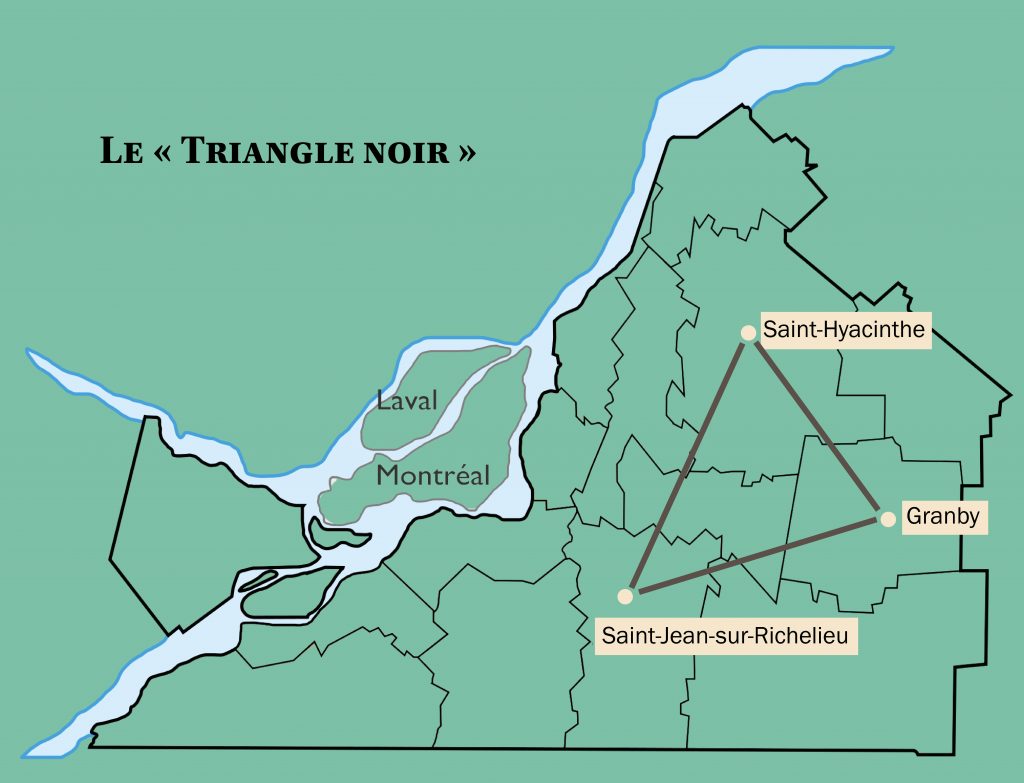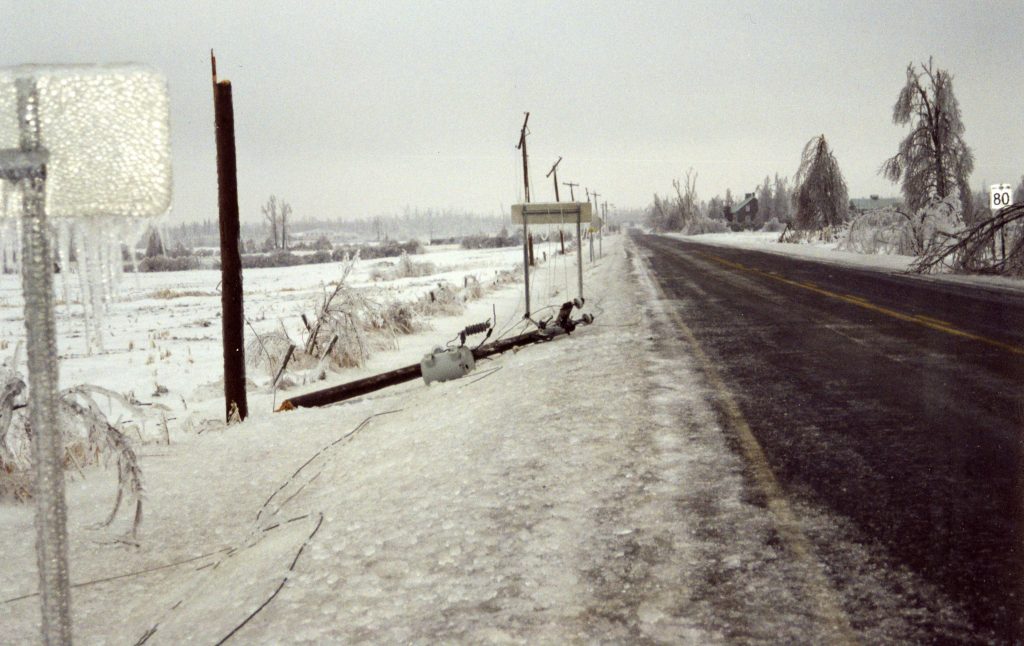The “Black Triangle”
The region hardest hit by the ice storm was inside the triangle formed by the cities of Saint-Jean-sur-Richelieu, Granby and Saint-Hyacinthe, dubbed the “Black Triangle” by the media (also known as the “Triangle of Darkness” and the “Ice Triangle”). Indeed, this area remained the longest without power and received the most freezing rain while, in other regions, the freezing rain was mixed with ice pellets, which are less damaging to electrical equipment. Power was out in the Black Triangle for about five weeks, affecting over 100,000 people. At night, without streetlights, cities and towns were pitch black. People stayed inside to keep warm and the streets were so dark and deserted that it looked like a ghost town. The various municipalities quickly declared states of emergency. Residents were told to go to shelters, but no one knew how long the situation would last. The electrical distribution system in the Black Triangle was not on a loop but instead had only one way of getting power; in other words, when the Saint-Césaire substation failed, there was no Plan B. After the crisis was over, to prevent another such disaster, Hydro-Québec proposed that the Hertel-Des Cantons transmission line be built to provide backup power for the Montérégie region.



